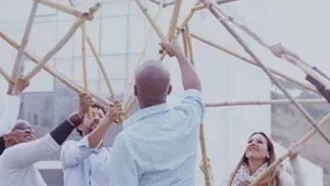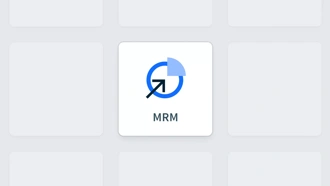What is creative project management?
Creative project management refers to the processes involved in ensuring the smooth delivery and management of creative projects within businesses and creative agencies. As you’d expect, creative project management is usually coordinated by a dedicated creative project manager who will organize, monitor, and coordinate the workload of copywriters, marketers, designers, and other creative stakeholders.
Why is creative project management important?
Creative project management provides a helpful framework to ensure work is done on time, on budget, and to a consistently high standard. Here are just a few reasons why creative project management is important:
- Ensures creative projects are briefed clearly and work is evenly distributed to appropriate team members
- By acting as the key coordinator between the creative team and those briefing projects, expectations can be managed and met appropriately regarding budgets, deadlines, and the creative direction of a project
- Prevents creative bottlenecks by monitoring the progress and objectives of projects to ensure everyone is on-track
- Coordinates feedback and approval processes to ensure everyone is satisfied prior to the sign-off of a project
Is your marketing team struggling to collaborate efficiently and deliver creative projects on time? See how Bynder’s Asset Workflow helps get your team on the same page for better creative and faster results.
What are the four main processes in a project lifecycle?
Initiation
Initiation is where the marketing team or stakeholder identifies a requirement for a creative asset. Goals and objectives are established, and the scope of the project is defined and agreed upon—a task typically coordinated by the creative project manager. Deadlines and processes for feedback and updates are documented, and a project plan comes together.
While the initiation stage is usually led by the creative project manager, it likely requires input from other team members. Every person in the team and project stakeholder should have a clear idea of what needs to be delivered, when, and why. If you are managing external stakeholders, i.e. clients—like with creative agency project management—agree on how updates will be communicated, and when. Assign a first point-of-contact for critical updates, and if appropriate, assign different specialists in your team to communicate directly about specific project areas.
Planning
This is where creative project managers create a detailed project plan based on the business case. Break down the tasks and establish a timeline of activities, workflows, and responsibilities based on benchmarks and deliverables.
If you haven’t formed your creative project team, now is the time. You may also realize that you need more personnel to cover the scope of your project. Once you’ve established the human and technical resources needed for the project, you can assign a budget and organize procurement.
Every project has risk involved so take the time to consider what roadblocks you might come up against and plan contingencies. Keep meeting with your team throughout this process to make sure you’ve covered all bases.
Execution
Now the real work comes in. Many of today’s creative teams leverage collaboration tools to automate much of the admin work associated with creative project execution, but it’s worth revisiting your workflows to make sure the work is aligned to meet objectives and check in with project stakeholders to ensure any potential issues are resolved.
Communication is absolutely critical throughout the execution stage. Make sure all teammates are thoroughly briefed, and quality is being monitored throughout.
Sign-off
The sign-off stage is where you gather and consolidate any final feedback, conduct a final review, and provide the finished deliverables. It is also the point where you take a moment to reflect on the project’s successes and failures, what could be changed for next time, and to celebrate the things that went right.
Want to learn more best practices on how to manage creative projects effectively? Check out our resource: Dominate the deadline: A guide for creative project management.



